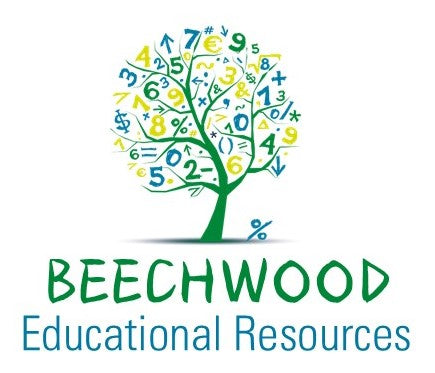Junior Cycle Curriculum
Linking Numero® to the Junior Cycle key skills and the Junior Cycle Mathematics Curriculum highlights how this innovative card game can support students' holistic development and enhance their mathematical abilities.
Numero® can be adjusted to suit students of varying abilities, ensuring everyone feels included and challenged. Students who struggle with their numeracy skills can focus on basic addition and subtraction, while students of higher ability can explore more complex combinations involving fractions, square roots, multiplication, division and even cube roots. Having a resource that can be differentiated quickly and easily ensures that each student can participate and achieve success.
Junior Cycle Key Skills
The Numero® card game aligns with several Junior Cycle key skills, including:
Managing Myself
- Link: Students set goals to improve their performance in the game and reflect on their strategies.
- Example: Keeping track of their scores fosters self-evaluation and persistence in improving mathematical problem-solving.
Staying Well
- Link: The game creates a fun, inclusive, and interactive environment, promoting a sense of achievement and reducing maths-related anxiety.
- Example: Friendly competition encourages collaboration and boosts confidence.
Communicating
- Link: Playing Numero® involves discussing strategies, negotiating moves, and explaining your reasoning.
- Example: Students articulate their thinking as they justify their calculations or challenge others' plays.
Working with Others
- Link: The game fosters teamwork, as students can work in pairs or groups to solve problems.
- Example: Cooperative learning is evident when students assist each other in understanding game rules and strategies.
Being Numerate
- Link: Numero® strengthens numerical fluency and problem-solving skills in an engaging way.
- Example: Students practice arithmetic operations, fractions, and algebraic thinking while competing in real-time.
Thinking Creatively and Critically
- Link: Students employ logic and creative problem-solving to maximise their scores.
- Example: Deciding the best combination of cards to achieve the highest possible takes value fosters critical thinking.
Junior Cycle Mathematics Curriculum
The Numero® card game supports the following key strands and learning outcomes:
|
Strand 3 Number |
|
Topic 3.1 Number System |
|
Learning Outcome 1: Investigate models such as decomposition, skip counting, arranging items in arrays, and accumulating groups of equal size to make sense of the operations of addition, subtraction, multiplication, and division in N (where the answer is in N), including the inverse operations |
|
Link: Students use decomposition to break down numbers into smaller components (e.g., factors or multiples) to form combinations. |
|
Example: To achieve a target number, a student might decompose 15 into 3×5 or use repeated addition to count up to it. |
|
Learning Outcome 2: Investigate the properties of arithmetic: commutative, associative, and distributive laws, and the relationships between them |
|
Link: Students must understand and apply these properties during game play to maximise their score. |
|
Example: A student may recognise that 3+4=4+3 (commutative) or 3×(4+2) = (3×4)+(3×2)(distributive). |
|
Learning Outcome 3: Investigate models such as the number line to illustrate the operations of addition, subtraction, multiplication, and division in Z |
|
Link: While a physical number line isn't used, players mentally visualise these operations and their relationships to integers. |
|
Example:It will reinforce to students that 3-4 =-1 and then -1+6 =5. |
|
Learning Outcome 4: Generalise and articulate observations of arithmetic operations |
|
Link: Students discuss strategies and justify their moves, articulating how they combined or manipulated numbers. |
|
Example: Explaining why 2×3+4=10 follows from the distributive property. |
|
Learning Outcome 5: Investigate models to help think about the operations of addition, subtraction, multiplication, and division of rational numbers |
|
Link: The game reinforces these operations by presenting numbers in various formats. |
|
Example: Students would be encouraged to spend time thinking about their moves and deciding which operation would give them more cards in their takes. |
|
Learning Outcome 6: Analyse solution strategies to problems |
|
Link: Players continuously evaluate their strategies, considering alternative methods to reach their goals. |
|
Example: Deciding between adding or multiplying to achieve a target number. |
|
Learning Outcome 7: Calculate percentages |
|
Link: Advanced game play or extensions could involve calculating percentages, especially in scoring systems. |
|
Example: Determining 50%, 20%, 25% etc of a card value as part of a move. |
|
Learning Outcome 8: Consolidate their understanding and learning of factors, multiples, and prime numbers in N |
|
Link: Many strategies require recognising factors, multiples, and primes to form valid moves. |
|
Example: Students will develop a better understanding of the importance of playing a Prime number at certain stages of the game or numbers that do not have 5 as a factor. |
|
Strand 1: Probability |
|
Topic 1.2 Concepts of probability |
|
Learning Outcome: use the language of probability to discuss events, including those with equally likely outcomes: |
|
Link: Students develop probabilistic thinking by predicting opponents’ potential moves and thinking about the likelihood of what cards they could have. |
|
Example: Students should be encouraged to communicate with one another regarding the likelihood of the opponent have a number that can be divided by 2, or encouraged to think about the probability of their opponent having a card of equal value. |
Reference:
https://www.curriculumonline.ie/junior-cycle/
https://www.curriculumonline.ie/junior-cycle/junior-cycle-subjects/mathematics/
